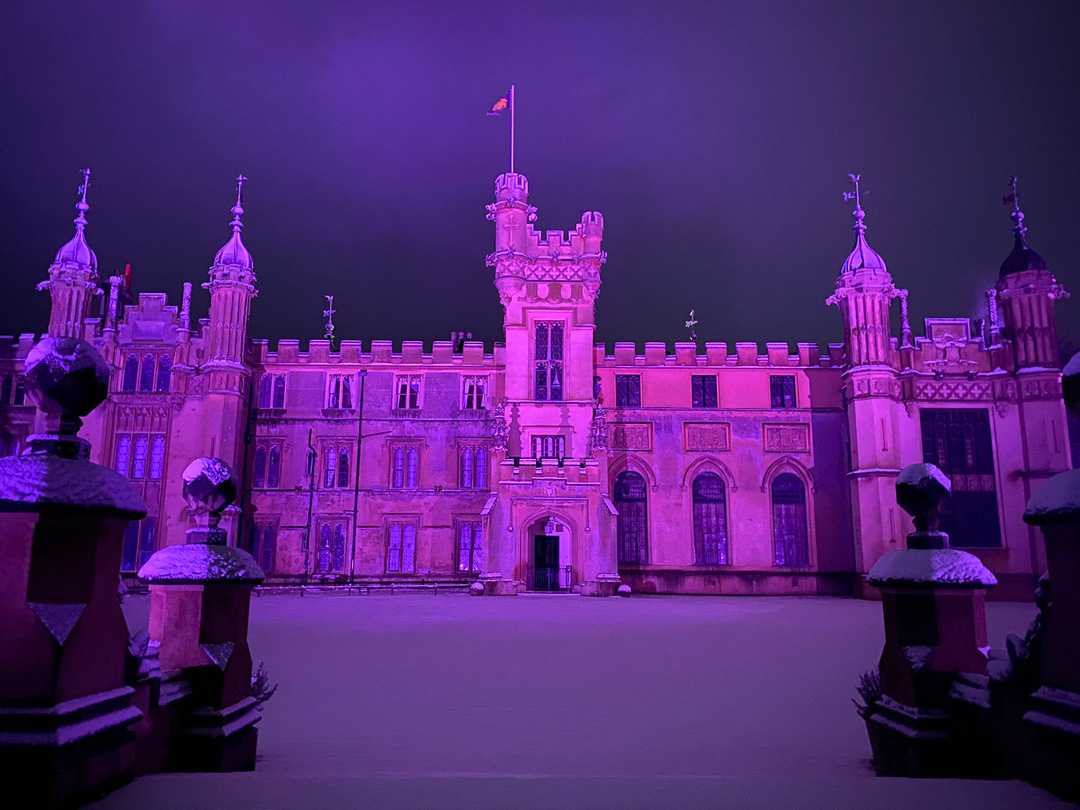Knebworth House bathed in a Anolis light
- Details

Today the house is still a home for its ancestral Lytton family as well as being open to the public. Its features include extensive landscaped gardens, it is also a well-known open-air venue for major rock and pop concerts as well as being a popular event space and location for film and TV shoots.
The lighting brief, recalls Anolis account and project manager Simon Gooding, was to upgrade the previous sodium lighting - probably dating back to the 1980s - with a sustainable, low maintenance, modern and cool alternative.
Simon assessed their needs, surveyed the site, and suggested four Anolis Divine 160 RGBW fixtures, three for the front façade of the house and one to cover the side elevation, together with a single ArcSource 48MC Integral to highlight the newly restored Watchman’s Tower which had been unused since the 1950s.
The client wanted to keep the existing lighting positions but wanted the additional flexibility of colour changing in addition to the signature warm white look.
Lumen output and the correct optics were key to the fixture choice and critical to avoid light pollution. The Divine 160s were picked for their intensity and coverage. Most of the positions are 20-40m away from the front of the house, an area covered by just three Divine 160s fitted with 35° lenses which effortlessly bathe a 75m-wide expanse with smooth, evenly distributed light.
The fixture on the side elevation has a 65-degree lens, and all the Divine 160s are RAL coated in 9011 graphite black for continuity.
Anolis provided one of its panel-mounted ArcControl DU units for day-to-day timed control, also programmed with a series of colour changing looks and sequences. The control is also adaptable and possible via smartphones, tablets, and other mobile devices.
















